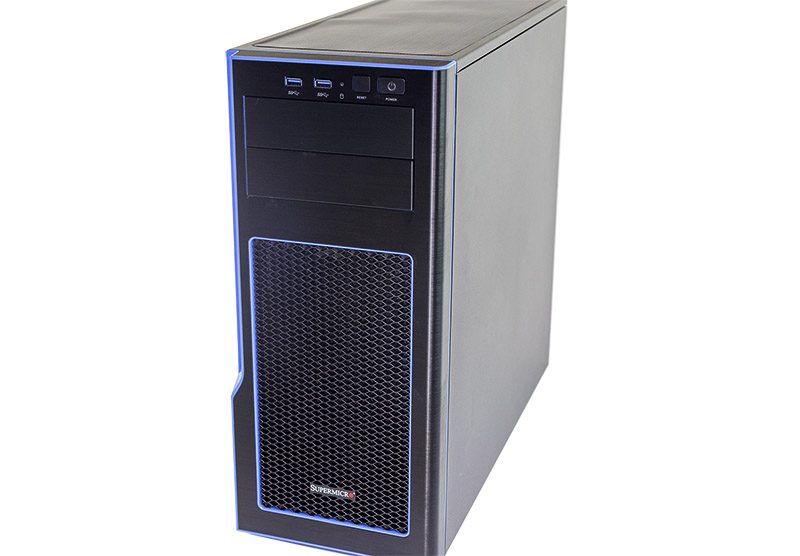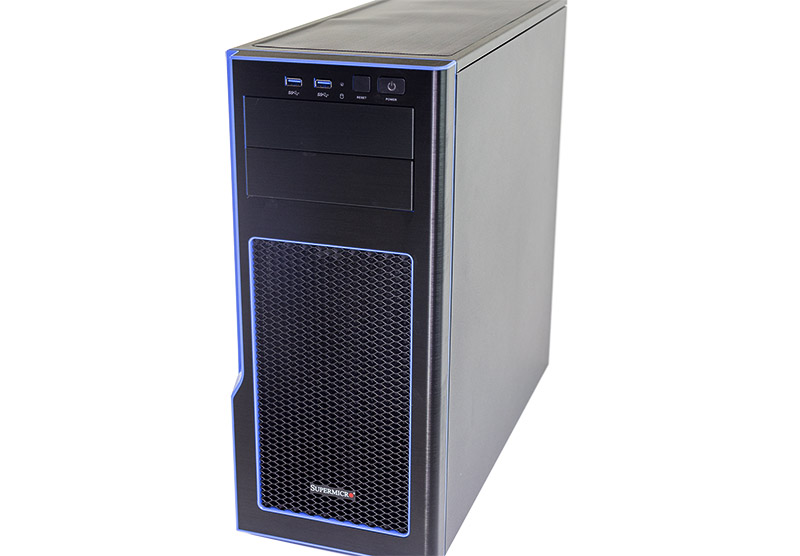We have had the opportunity to start testing another Intel Xeon Phi x200 Knight’s Landing system, the Supermicro SYS-5038K-I-ES1. The goal of the system is to have a desktop development platform for the Knights Landing processors that is priced under a departmental $5000 procurement threshold. The system comes equipped with a single CPU motherboard, a CoolIT systems liquid cooled Intel Xeon Phi 7210 (64 core) processor and 6x 16GB DDR4 RDIMMs by default.
When we first booted the system we used an Intel DC S3700 400GB SSD which had a Windows Server 2012 R2 installation that had not been updated in over a year. We watched the system boot via the system’s iKVM functionality and it worked without issue. We then tried running a program (Cinebench R15) just to see if it would work. Indeed, Windows saw a 256 thread processor and ran the ray tracing application out-of-the-box.

We did not do any performance optimizations for this run, and there are many for the KNL system. The run did not utilize any of the KNL features that give the platform its true power such as AVX512. That testing is coming. We did validate one of the major selling points of KNL. Code made to run on other Intel x86 architectures will work without modification on the new Intel Xeon Phi x200 (KNL) generation. The impact of this is enormous and is a key reason we saw so many KNL supercomputer system wins at SC16 this year. Applications can access a highly parallelized architecture without needing a co-processor. The Intel Xeon Phi x200 has direct access to the hex-channel system RAM as well as 16GB of high-bandwidth/ low latency MCDRAM without a performance penalty from traversing the PCIe bus.
Check out the video for the results and another view of the system.
We do have many more useful benchmarks, workloads and information queued on the KNL systems. We did want to show that this system is capable of running legacy x86 code out-of-the-box. This is a question that we have received from readers more than 100 times over the past year so we hope this video is a definitive answer to that question.
Stay tuned for more to come on Knights Landing. In the meantime, you can check out our starter CUDA machine learning/ AI/ deep learning workstation guide. We have a lot of machine learning content hitting STH over the next few months.





wow, very cool! Look forward to more results
Outstanding. Cannot wait to see the results.
Would be really cool if you guys tested various non-HPC related tasks too, well, i mean, stuff it wasn’t really designed to do, like how if would perform on multithreaded image processing like http://www.graphicsmagick.org
MySQL or MemSQL performance?
nginx (load balancing and/or webserver) and/or haproxy
Encoding, h264 and/or h265 etc etc
Yes, i know it wasn’t ment to do these tasks but still, would be cool to see if it performed well in any of these tasks, well, come to think of it, image processing image processing should be pretty suitable for the Phi?
Is the MCDRAM low latency compared to the DDR4? That’s a benchmark metric I’d like to see. It sits very close but given the higher bandwidth, it might not have better latency and wouldn’t be suited for use as a cache in many applications.
Hi Jordan, we will have benchmarks soon(-ish) with this.
Hello do someone knows if the xeon phi knl can work on any new Lga3647 motherboard?
Clement that was the original plan, but Intel scrapped that capability. You need a Xeon Phi board for these.